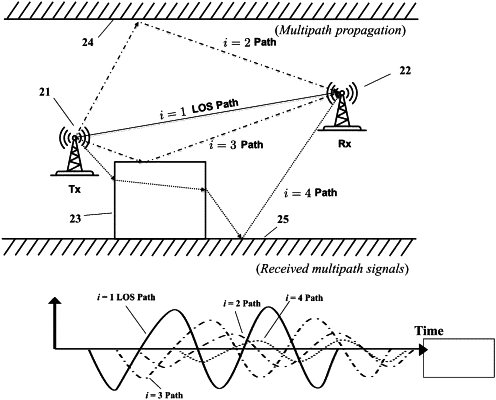| CPC H04W 24/10 (2013.01) [H04B 17/309 (2015.01); H04W 4/38 (2018.02); H04W 16/20 (2013.01); H04W 72/0453 (2013.01); H04W 84/12 (2013.01)] | 14 Claims |

|
1. A system for estimating a state of an environment comprising:
at least one processor; and
memory having instructions stored thereon that, when executed by the at least one processor, cause the system to:
receive multi-channel information of a multi-band Wi-Fi transmission that provides Wi-Fi coverage of the environment, the multi-channel information including one or multiple properties of a centimeter-wavelength channel of the multi-band Wi-Fi transmission and one or multiple properties of a millimeter-wavelength channel of the multi-band Wi-Fi transmission;
determine the state of the environment using jointly the one or multiple properties of the centimeter-wavelength channel and the one or multiple properties of the millimeter-wavelength channel, wherein the state of the environment includes one or more attributes of one or more devices communicating via the multi-band Wi-Fi transmission within the environment, and wherein to determine the state of the environment, the processor is configured to:
extract first features from the one or multiple properties of the centimeter-wavelength channel;
extract second features from the one or multiple properties of the millimeter-wavelength channel;
fuse the extracted first features and the second features to produce fused features; and
estimate the state of the environment, based on the fused features; and
submit the state of the environment to a service provider to service the environment.
|